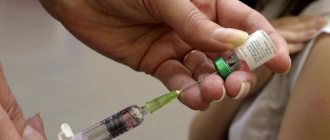Against the background of weak compensation of diabetes mellitus, 10–20% of patients develop a dangerous complication - diabetic nephropathy (ICD 10 code - N08.3). Due to damage to small and large vessels, many organs suffer, including the kidneys. Bilateral damage to natural filters disrupts the functioning of the excretory system, provokes stagnation, and worsens the course of endocrine pathology.
Who is at risk? What symptoms indicate the development of a dangerous complication? How to restore the functioning of the bean-shaped organs? How to prevent kidney damage in diabetes? The answers are in the article.
[contents]
Causes
A slowly progressive complication, against which chronic renal failure develops, is more often detected in men, people with a long history of diabetes, and adolescents with an insulin-dependent type of disease. Without treatment, death can occur.
There are several theories for the development of diabetic nephropathy:
- hemodynamic. The main factor is intraglomerular hypertension, a violation of blood flow in the structures of the bean-shaped organs. At the first stage of the pathological process, increased accumulation of urine was noted, but over time the connective tissue grows, the kidneys significantly reduce fluid filtration;
- metabolic. Against the background of persistent hyperglycemia, negative changes occur in the course of metabolic processes: the toxic effect of increased glucose concentrations appears, glycated proteins are formed, and the level of fat increases. Against the background of capillary damage, the glomeruli and other elements of the bean-shaped organs experience excessive stress and gradually lose functionality;
- genetic. The main cause of DN is the influence of factors programmed at the genetic level. Against the background of diabetes, metabolism is disrupted and changes occur in blood vessels.
Learn about the symptoms of endemic thyroid goiter, as well as treatment for the disease.
Effective methods of treating pancreatic diseases using traditional medicine are collected in this article.
Risk group:
- patients with diabetes experience of 15 years or more;
- adolescents with type 1 pathology;
- persons diagnosed with insulin-dependent diabetes mellitus.
Provoking factors:
- persistent arterial hypertension, especially with irregular use of drugs that stabilize blood pressure;
- obesity;
- infectious lesion of the genitourinary area;
- smoking;
- taking medications that negatively affect the kidney structures;
- male gender;
- poor diabetes compensation, uncontrolled hyperglycemia for a long time.
Classification
The development of diabetic nephropathy is divided into 5 degrees:
- first degree – renal hyperfunction. At an early stage, the vessels of the organs increase somewhat in size, but there is no protein in the urine, and there are no external clinical signs of the development of the pathological process;
- second degree – initial structural changes in the kidneys. On average, this stage of disease development begins two years after the onset of diabetes mellitus. The walls of the kidney vessels thicken, however, there are no symptoms;
- third degree – initial diabetic nephropathy. An increased amount of protein is detected in the urine, but there are no external signs of the development of the disease;
- fourth degree – severe diabetic nephropathy. As a rule, this stage of development of the disease begins after 10-15 years. There is a pronounced clinical picture, a large amount of protein is excreted in the urine;
- fifth degree – end-stage renal failure. In this case, a person’s life can only be saved by hemodialysis or transplantation of the affected organ.
It should be noted that the first 3 degrees of development of the disease are preclinical; they can only be established through diagnostic procedures, since they have no external manifestations. That is why patients with diabetes must undergo preventive examinations from doctors regularly.
First signs and symptoms
A characteristic feature of diabetic nephropathy is the gradual development of negative signs and slow progression of pathology. In most cases, kidney damage affects patients with 15–20 years of diabetes experience. Provoking factors: fluctuations in glucose levels, frequent excess of blood sugar levels, lack of discipline of the patient, insufficient control of sugar levels.
Stages of diabetic nephropathy:
- asymptomatic. Absence of a pronounced clinical picture. Tests show an increase in glomerular filtration; microalbumin in the urine does not reach 30 mg per day. In some patients, ultrasound will reveal hypertrophy of the bean-shaped organs, increased blood flow in the kidneys;
- the second stage is the beginning of structural changes. The condition of the renal glomeruli is disrupted, increased fluid filtration and urine accumulation persist, tests show a limited amount of protein;
- the third stage is prenephrotic. The concentration of microalbumin increases (from 30 to 300 mg per day), proteinuria rarely develops, and surges in blood pressure occur. Most often, glomerular filtration and blood flow velocity are normal or deviations are minor;
- fourth stage. Persistent proteinuria, tests show the constant presence of protein in urine. Periodically, hyaline casts and blood appear in the urine. Persistent arterial hypertension, tissue swelling, abnormal blood counts. The transcript of the analysis indicated an increase in cholesterol, ESR, beta and alpha globulins. Urea levels and creatinine levels change slightly;
- fifth, the most difficult stage. With persistent uremia and the development of nephrosclerosis, the concentration and filtration capacity of the bean-shaped organs sharply decreases, and azothermia develops. Blood protein is below normal, swelling increases. Specific test results: the presence of protein, casts, blood in the urine, sugar in the urine is not determined. In diabetics, blood pressure increases significantly: up to 170–190 or more (upper) by 100–120 mm Hg. Art. (bottom). A specific feature of the nephrosclerotic stage is a decrease in insulin loss in the urine, a decrease in the need for exogenous production of the hormone and glucose concentration, and the risk of hypoglycemia. At the fifth stage of diabetic nephropathy, a dangerous complication develops - renal failure (chronic type).
READ ALSO: How to correctly calculate the dose of insulin: types of insulin therapy, common mistakes of patients
Symptoms of diabetic nephropathy
Of course, diabetic nephropathy is characterized by a certain set of signs indicating the development of a pathological condition. However, speaking about this, I would like to draw attention to the fact that the initial stages are not accompanied by specific symptoms. In the foreground are always precisely those clinical manifestations that directly indicate diabetes mellitus. We are talking about constant or increased thirst compared to normal, frequent urination and worsening immunity.
In addition, it is strongly recommended to pay attention to the likelihood of inflammatory diseases.
The symptoms of diabetic nephropathy will become much more severe as they progress. They may differ depending on the individual characteristics of the organism, but in general they boil down to the following:
- increase in blood pressure;
- swelling that affects the face, especially the area around the eyes, as well as the feet and legs. In the vast majority of cases, edema forms in the morning;
- the appearance of a protein component in urine tests.
How to clean blood vessels with diabetes
As renal failure develops, a gradual decrease in the ratio of urine excreted is identified, as well as some general signs of intoxication. We are talking about nausea, vomiting, significant muscle weakness and headaches. Further, the pathology may be accompanied by dryness and itching of the skin, and the formation of a white coating in the affected area. In addition, diabetic nephropathy at the present stage may be associated with shortness of breath and the occurrence of diarrhea.
Thus, taking into account all the symptoms of the disease and the criticality of the disease in diabetes mellitus, it would be best to begin the recovery process as early as possible. But before this, it is strongly recommended to determine the specific form of the pathological condition and what stage it is at.
Diagnostics
Early detection of kidney damage in diabetes helps maintain the stability of excretory function and the patient’s life. The asymptomatic course of diabetic nephropathy complicates diagnosis, but there is a simple way to reduce the risk of dangerous consequences - regular health monitoring. It is important to periodically donate blood and urine, undergo an ultrasound examination of the kidneys and abdominal organs.
When the first signs of DN appear, the patient should undergo an in-depth examination:
- urine and blood analysis (general and biochemical);
- Rehberg and Zimnitsky test;
- performing ultrasound and Dopplerography of renal vessels;
- clarification of albumin level in urine;
- bacterial culture of urine;
- examination of the organs of the excretory system using ultrasound;
- excretory urography;
- determining the ratio of indicators such as creatinine and albumin in the morning portion of urine;
- aspiration biopsy of renal tissue with the rapid development of nephrotic syndrome.
It is important to differentiate DN from severe lesions of the bean-shaped organs. Specific signs are similar to manifestations of kidney tuberculosis, indolent form of pyelonephritis, glomerulonephritis. If diabetic nephropathy is confirmed, albumin excretion exceeds 300 mg per day or a large amount of protein is detected in the urine. In the severe stage of DN, the level of phosphates, lipids, calcium, urea and creatinine in the urine is significantly increased, and massive proteinuria develops.
General rules and effective tagging
Detection of any amount of protein in the urine is a reason for an in-depth examination and initiation of therapy. It is important to stabilize kidney function before critically extensive areas of fibrosis develop.
Main goals of therapy:
- protect natural filters from the influence of negative factors associated with diabetes;
- lower blood pressure, reduce the load on the kidney vessels;
- restore the functionality of the bean-shaped organs.
When microalbuminuria (protein in the urine) is detected, complex treatment ensures the reversibility of pathological processes and returns indicators to optimal values. Proper implementation of therapy restores the storage, filtration, and excretory functions of natural filters.
READ ALSO: How diabetes mellitus develops in women: symptoms and signs, methods of treating impaired insulin production in the pancreas
To stabilize blood pressure, a diabetic takes a set of medications:
- combination of ACE inhibitors with angiotensin receptor blockers;
- diuretics to remove excess water and sodium, reduce swelling;
- beta blockers. The drugs lower blood pressure and blood volume with each contraction of the heart muscle and reduce heart rate;
- calcium channel blockers. The main purpose of drugs is to facilitate blood flow through the renal vessels;
- As prescribed by your doctor, you need to take blood thinners: Cardiomagnyl, Aspirin Cardio. It is important to follow the daily dosage, course duration, and treatment rules to avoid the risk of gastric bleeding.
General recommendations:
- monitor sugar levels, take medications that normalize glucose levels, and receive the optimal dose of insulin. It is important to prevent hyperglycemia, against the background of which diabetic nephropathy develops;
- stop smoking and drinking alcohol;
- follow a low-carbohydrate diet, avoid frequent consumption of protein foods;
- perform exercises to prevent obesity and normalize the condition of blood vessels;
- be nervous less often;
- in agreement with the endocrinologist and cardiologist, replace nephrotoxic drugs with more benign names;
- prevent high levels of cholesterol and triglycerides: eat less animal fats, take tablets to stabilize the lipid factor: Finofibrate, Lipodemin, Atorvastatin, Simvastatin;
- be sure to measure glucose levels throughout the day: in the later stages of diabetic nephropathy, hypoglycemia often develops.
Learn about the causes of follicular ovarian cysts, as well as methods of treating the tumor.
The rules and features of using Metformin tablets for type 1 and type 2 diabetes are described on this page.
Follow the link https://vse-o-gormonah.com/vnutrennaja-sekretsija/nadpochechniki/nedostatochnost-y-zhenshin.html and read about the characteristic symptoms and effective methods of treating primary adrenal insufficiency in women.
Important details:
- preventive measures are replaced by active therapeutic methods against the background of the development of the third stage of diabetic nephropathy. It is important to stabilize cholesterol levels and sharply reduce the intake of animal protein and salt. To normalize the functioning of the heart and blood vessels and treat arterial hypertension, ACE inhibitors and drugs that stabilize blood pressure are needed;
- if the patient began to be examined at stage 4 of DN, then it is important to follow a salt-free and low-protein diet, receive ACE inhibitors, and be sure to reduce the level of triglycerides and “bad” cholesterol using the drugs indicated above;
- in severe, fifth stage of DN, doctors supplement treatment measures with other types of therapy. The patient receives vitamin D3 to prevent osteoporosis, erythropoietin to optimize hemoglobin levels. The development of chronic renal failure is a reason for prescribing peritoneal blood purification, hemodialysis or kidney transplantation.
Treatment
When a diagnosis of “diabetic nephropathy” is established, it is customary to approach the problem in a comprehensive manner. Depending on the stage of the lesion, special medications are used, adherence to dietary principles of nutrition and dialysis in the final stages.
If the damage to the body is extreme, the patient will require an organ transplant.
Drugs
The following group of medications is used in the treatment of diabetic nephropathy:
- anti-azotemic agents;
- sorbents;
- means for normalizing lipid metabolism of blood vessels;
- inhibitors necessary to restore blood pressure;
- complex of vitamins and minerals.
The choice of medications and determination of their dosage depends on the stage of damage to the body by diabetic nephropathy. It is important not to stop your doctor’s recommendations for diabetes treatment.
Folk recipes
Recipes of alternative medicine are excellent auxiliary means of treating diabetic nephropathy.
These include:
- Pass the lingonberry berries through a meat grinder, add sugar 1:1 to the resulting mixture. Store the resulting mass in the cold and use it as a syrup for diluting compote.
- Mix 20 g of nettle, 25 g each of yarrow flowers and coltsfoot, as well as 30 g of St. John's wort into a homogeneous crushed mixture. Pour 2 tablespoons with a quarter glass of hot water and leave to infuse. The decoction is consumed in 2 doses. The course of treatment is at least 20 days.
- Pour the strawberry leaves and berries into a glass, bring to a boil and keep on the fire for another 10 minutes. Take the resulting product 2-3 times a day, 2 large spoons.
Traditional medicine recipes are not an alternative to drug therapy and are considered only as auxiliary methods of therapy.
Diet
In diabetic nephropathy, a prerequisite for successful therapy and maintenance of the patient’s condition is adherence to dietary principles:
These include the following recommendations:
- limit the amount of fat in food;
- reduce animal protein consumption to a minimum;
- minimize the amount of salt, potassium and phosphorus components;
- normalize your drinking regime.
The nutrition table for a diabetic is prescribed by the doctor according to the stage of progression of the disease.
Prevention
This dangerous complication of diabetes develops less frequently if the patient follows the doctor’s recommendations and achieves a high degree of compensation for endocrine pathology. In types 1 and 2 diabetes, it is important to choose the optimal dose of insulin to avoid sharp fluctuations in glucose levels. It is important to regularly visit an endocrinologist and get tested to identify the initial stage of DN.
Learn more about the features of treatment for severe complications of diabetes mellitus on the kidneys from the following video:
What is nephropathy in diabetes mellitus
Complications that occur during the development of diabetes mellitus cause anxiety among doctors and patients. Such serious complications include diabetic nephropathy, which occurs in approximately 75% of diabetic patients and often leads to death.
It is worth knowing that nephropathy in type 1 diabetes mellitus is in 1st place. If type 2 diabetes is observed, then death is in 2nd place, especially if the complication affects the blood vessels and heart. An interesting point is the fact that this disease is much more often diagnosed in patients with type 1 diabetes, namely men and adolescents, than in children under 10 years of age.
You need to know that diabetic nephropathy combines the following diseases into a group:
- pyelonephritis;
- arteriosclerosis of the largest arteries of the kidneys;
- necrosis of the tubules of the paired organ;
- the appearance of fatty deposits in such tubules;
- diabetic glomerulosclerosis, etc.
They all have their own symptoms that you need to know to make a correct diagnosis.
Diabetic nephropathy is not an independent disease, since it includes a whole series of different pathologies in which severe damage to the kidney vessels develops as a result of developed diabetes, which occurs in a chronic form.












